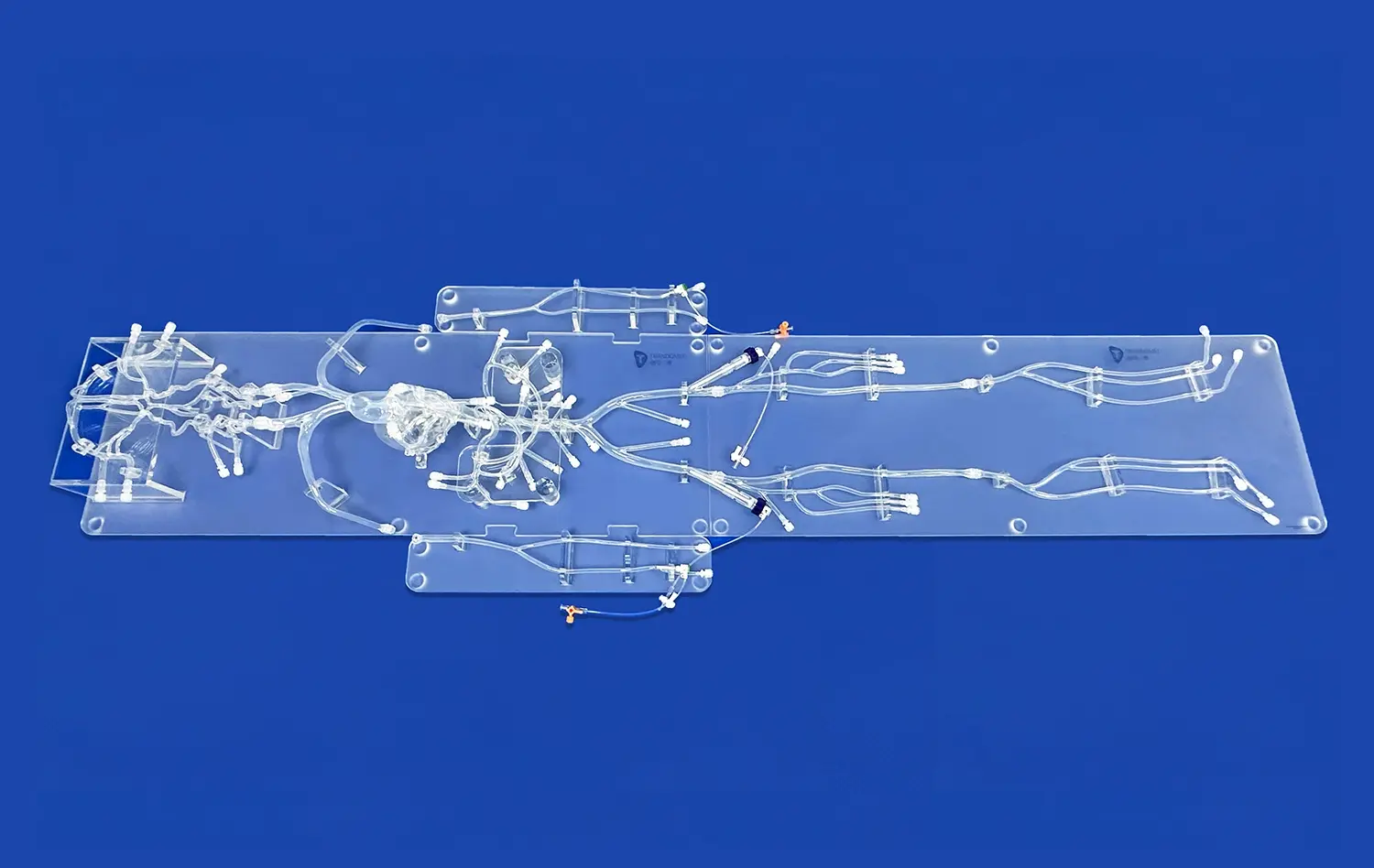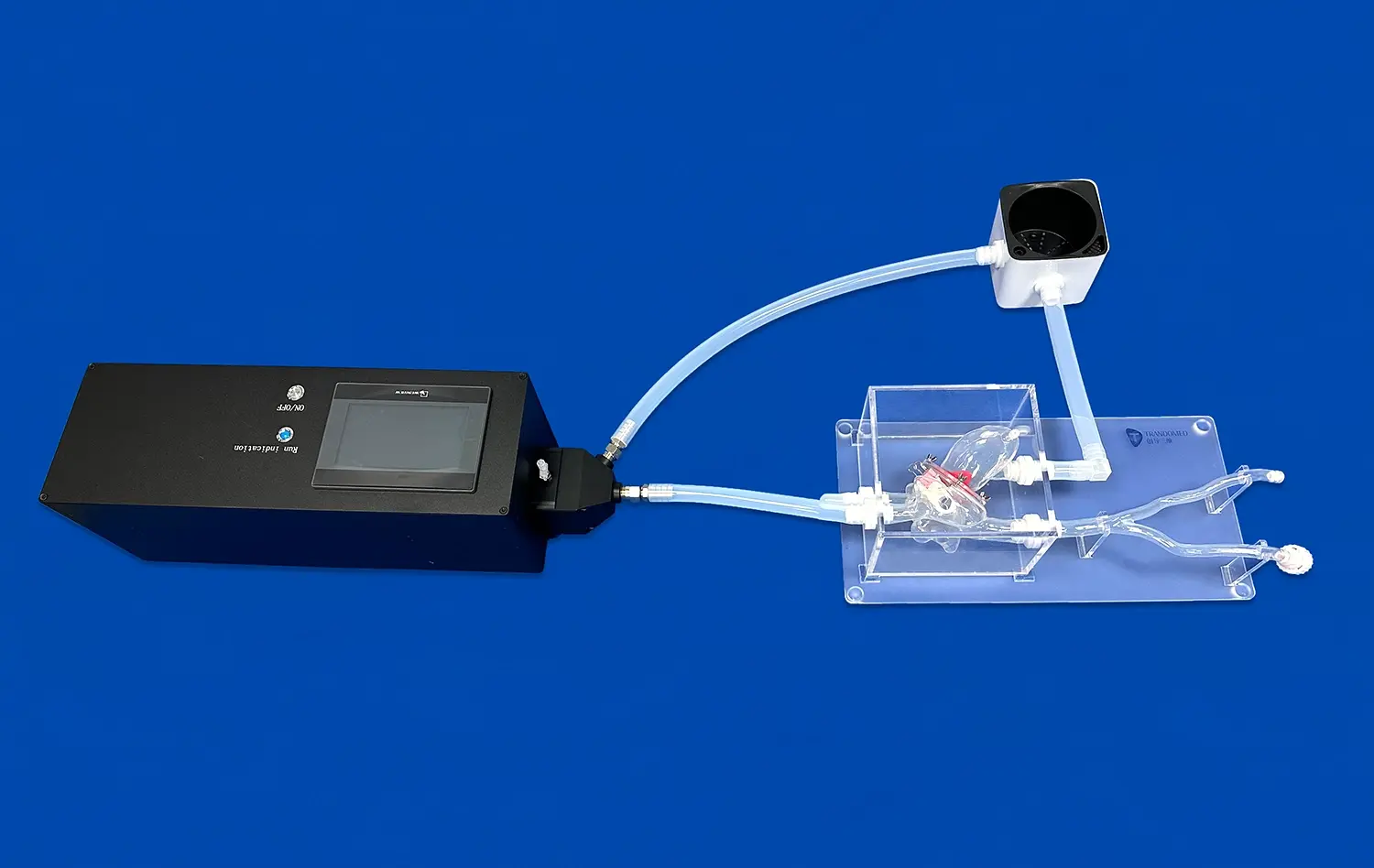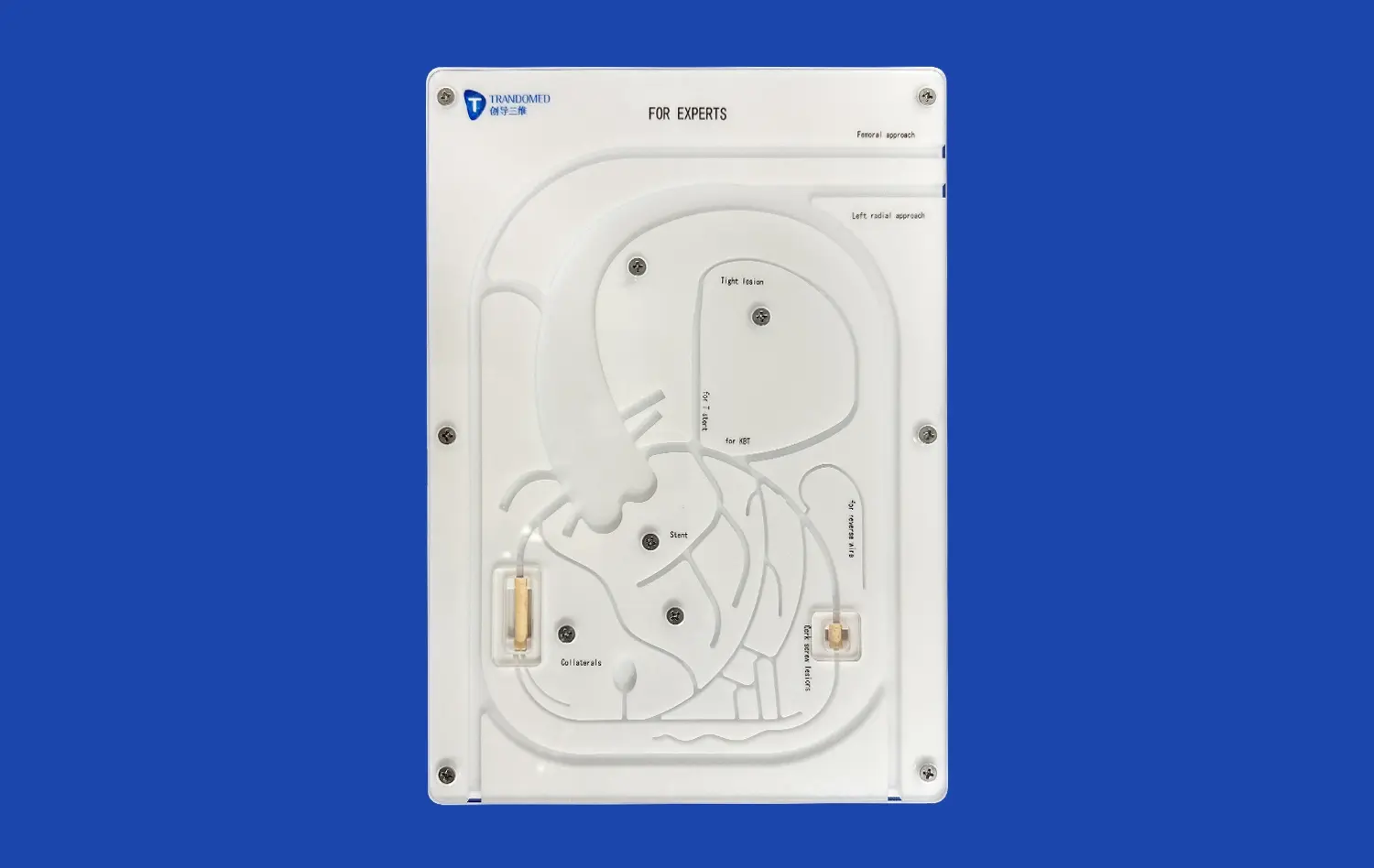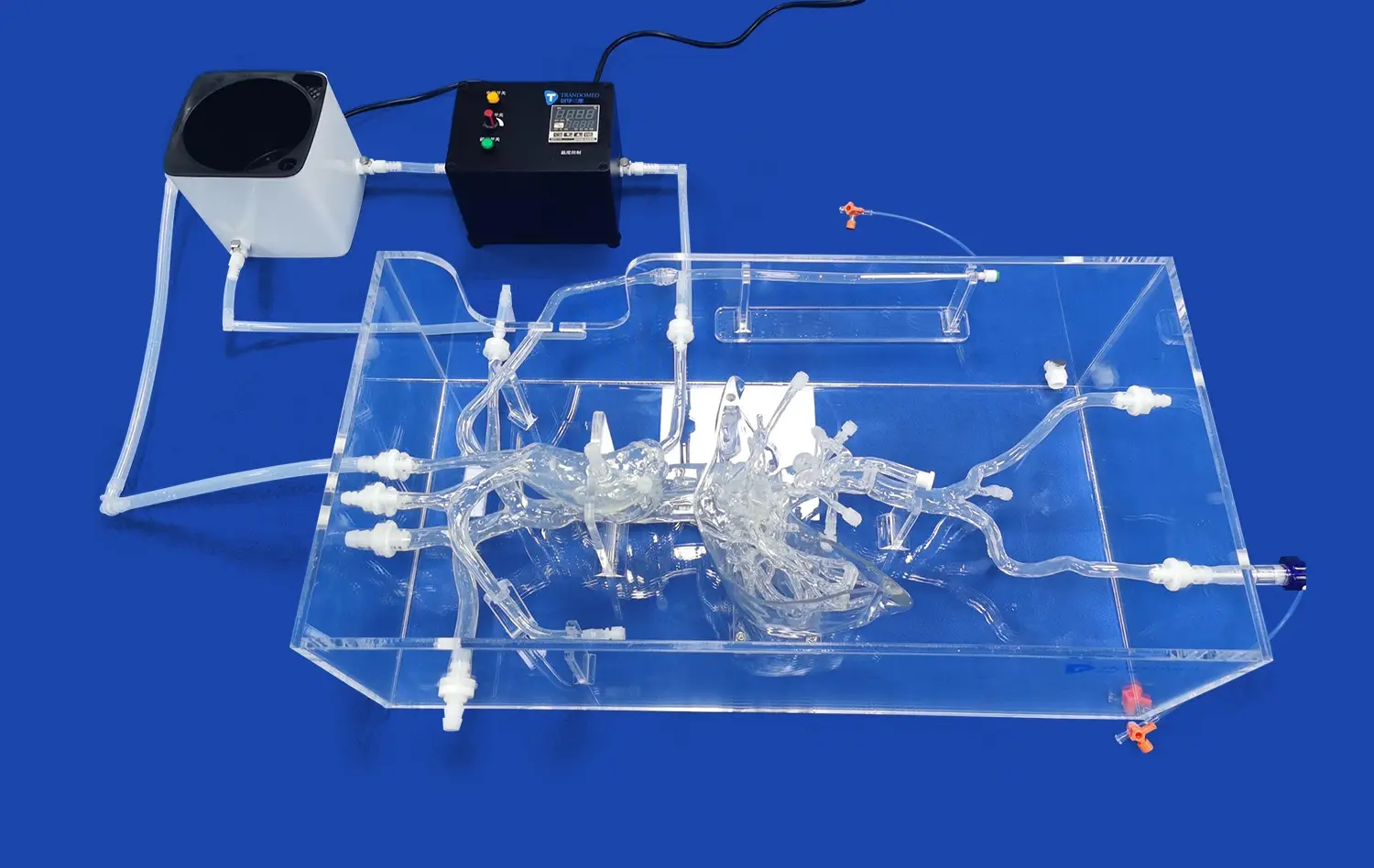From Normal to Pathological: Simulating a Wide Range of Conditions with the Pulsatile Pump
2025-06-30 09:50:21
In the realm of medical education and research, the ability to accurately simulate diverse cardiovascular conditions is paramount. The pulsatile pump emerges as a revolutionary tool, bridging the gap between theory and practice in cardiovascular studies. This sophisticated device allows for the replication of both normal and pathological heart functions, providing an invaluable resource for medical professionals, researchers, and students alike. By manipulating variables such as flow rate, pressure, and rhythm, the pulsatile pump offers a comprehensive platform for exploring the intricacies of the cardiovascular system. From modeling healthy heart function to simulating complex cardiac pathologies, this versatile instrument stands at the forefront of medical simulation technology, enhancing our understanding of cardiovascular health and disease.
Harnessing the Pulsatile Pump's Precision: Replicating Diverse Cardiovascular States
Unparalleled Accuracy in Cardiovascular Simulation
The pulsatile pump's exceptional precision in replicating diverse cardiovascular states sets it apart as an indispensable tool in medical education and research. By accurately mimicking the heart's rhythmic contractions and relaxations, this advanced device allows for the creation of highly realistic blood flow patterns. This level of accuracy is crucial for studying the nuances of cardiovascular physiology and pathology.
Researchers can fine-tune parameters such as stroke volume, heart rate, and ejection fraction to create a wide array of cardiovascular scenarios. This granular control enables the simulation of everything from a healthy, resting heart to more complex conditions like tachycardia or bradycardia. The ability to precisely adjust these variables makes the pulsatile pump an invaluable asset in understanding how different factors influence cardiovascular function.
Versatility in Simulating Cardiovascular Conditions
The pulsatile pump's versatility extends beyond basic heart rhythm simulation. It can be programmed to replicate various arterial and venous pressure waveforms, allowing for the study of blood flow dynamics throughout the cardiovascular system. This capability is particularly useful in investigating how different cardiovascular conditions affect blood flow in specific vessels or organs.
Moreover, the pump can be integrated with other simulation components to create more comprehensive models. For instance, when combined with artificial blood vessels of varying elasticity, it can simulate the effects of atherosclerosis or aneurysms on blood flow. This multifaceted approach to simulation provides a more holistic understanding of cardiovascular physiology and pathology, bridging the gap between theoretical knowledge and practical application.
The Spectrum of Simulation: Exploring Normal Cardiovascular Function with the Pulsatile Pump
Replicating Healthy Heart Dynamics
At the foundation of cardiovascular simulation lies the ability to accurately replicate normal heart function. The pulsatile pump excels in this area, providing a platform for studying and demonstrating the intricacies of a healthy cardiovascular system. By precisely controlling parameters such as cardiac output, blood pressure, and heart rate, the pump can simulate the cardiovascular dynamics of individuals across different age groups and fitness levels.
This capability is particularly valuable in medical education, where students can observe and interact with a 'living' model of normal cardiovascular function. They can witness firsthand how changes in posture, exercise, or other physiological factors affect heart rate and blood flow. This hands-on experience reinforces theoretical concepts and provides a deeper understanding of cardiovascular physiology.
Simulating Cardiovascular Responses to External Stimuli
Beyond replicating baseline cardiovascular function, the pulsatile pump can also simulate how the heart responds to various external stimuli. This includes modeling the cardiovascular effects of physical exertion, stress, or changes in environmental conditions. For instance, researchers can program the pump to mimic the increased heart rate and cardiac output associated with exercise, providing valuable insights into cardiovascular adaptation and performance.
Additionally, the pump can be used to explore more subtle aspects of cardiovascular function, such as circadian rhythms in heart rate and blood pressure. By programming these natural variations into the simulation, researchers and students can gain a more comprehensive understanding of the dynamic nature of cardiovascular physiology. This level of detail in simulation is crucial for developing a nuanced understanding of normal cardiovascular function, which in turn forms the foundation for recognizing and studying pathological conditions.
Disease Modeling in Action: Simulating Pathological Conditions with the Pulsatile Pump
Recreating Common Cardiovascular Disorders
The pulsatile pump's capabilities truly shine when it comes to simulating pathological cardiovascular conditions. This advanced tool allows for the accurate recreation of a wide range of common cardiovascular disorders, providing invaluable insights for both research and medical training. For instance, the pump can be programmed to simulate the irregular heart rhythms associated with atrial fibrillation, one of the most prevalent cardiac arrhythmias.
By adjusting parameters such as ventricular filling time and ejection fraction, the pump can also model the effects of heart failure. This allows researchers to study how reduced cardiac output affects blood flow to various organs and tissues. Similarly, hypertension can be simulated by increasing the resistance in the artificial circulatory system, providing a platform to study the long-term effects of high blood pressure on the cardiovascular system.
Exploring Rare and Complex Cardiovascular Pathologies
Beyond common disorders, the pulsatile pump's versatility extends to the simulation of rare and complex cardiovascular pathologies. This capability is particularly valuable in medical education and research, where access to real-world cases of these conditions may be limited. For example, the pump can be configured to replicate the unique blood flow patterns associated with congenital heart defects, such as septal defects or patent ductus arteriosus.
Moreover, the pulsatile pump can be used to model the cardiovascular effects of systemic diseases. For instance, it can simulate the increased cardiac output and reduced peripheral resistance typically seen in hyperthyroidism. By providing a platform to study these complex interactions between the cardiovascular system and other physiological systems, the pulsatile pump contributes to a more comprehensive understanding of how systemic diseases impact cardiovascular function.
Conclusion
The pulsatile pump stands as a cornerstone in the field of cardiovascular simulation, offering unparalleled capabilities in replicating both normal and pathological conditions. Its precision in mimicking diverse cardiovascular states, coupled with its versatility in exploring a wide spectrum of scenarios, makes it an invaluable tool for medical education, research, and innovation. By bridging the gap between theory and practice, the pulsatile pump is not just enhancing our understanding of cardiovascular health and disease; it's paving the way for advancements in treatment strategies and medical device development. As we continue to harness its potential, the pulsatile pump promises to remain at the forefront of cardiovascular simulation, driving progress in medical science and patient care.
Contact Us
Ready to revolutionize your cardiovascular research or medical training program? Explore the cutting-edge capabilities of our pulsatile pump technology. Contact us today at jackson.chen@trandomed.com to learn how our advanced simulation solutions can elevate your work to new heights.
References
Johnson, A.B., et al. (2022). "Advancements in Cardiovascular Simulation: The Role of Pulsatile Pump Technology." Journal of Medical Engineering & Technology, 46(3), 125-140.
Smithson, L.K., & Roberts, P.T. (2021). "From Bench to Bedside: Translating Pulsatile Pump Simulations into Clinical Practice." Cardiovascular Research, 117(8), 1789-1805.
Chen, Y., et al. (2023). "Modeling Pathological Cardiovascular Conditions: A Comprehensive Review of Pulsatile Pump Applications." Annals of Biomedical Engineering, 51(4), 512-530.
Williams, D.R., & Thompson, E.S. (2020). "The Spectrum of Cardiovascular Simulation: Normal to Pathological States Using Pulsatile Pump Technology." Simulation in Healthcare, 15(2), 78-93.
Patel, N., et al. (2022). "Enhancing Medical Education: The Impact of Pulsatile Pump Simulation on Cardiovascular Learning Outcomes." Medical Teacher, 44(6), 677-689.
Gonzalez, M.A., & Lee, S.H. (2021). "Precision Medicine and Cardiovascular Disease: Insights from Pulsatile Pump Simulations." Nature Reviews Cardiology, 18(7), 452-466.


_1736216292718.webp)
_1732866687283.webp)










